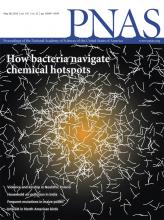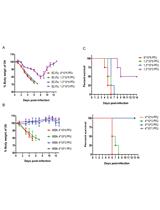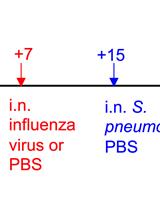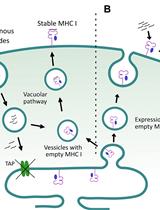- EN - English
- CN - 中文
Environmental Conditioning and Aerosol Infection of Mice
环境调节与小鼠气溶胶感染
发布: 2020年04月20日第10卷第8期 DOI: 10.21769/BioProtoc.3592 浏览次数: 5010
评审: Longping Victor TseMigla MiskinyteAnonymous reviewer(s)
Abstract
Influenza infection models in mice are widely used to study flu-mediated immune responses and pathology. However, most laboratory mice are housed at 20 °C and 50% relative humidity (RH). To better recapitulate influenza epidemics and immune responses during winter seasons, mice were housed at 20 °C under different humidity conditions, 10-20% or 50% RH. Here, we describe a protocol for using aerosolized droplets to infect mice with influenza under different environmental conditions. Using this method enables influenza infection studies performed under more physiologically relevant conditions which better mimics human viral exposure.
Background
Influenza A viruses (IAVs) are one of the major causes of seasonal respiratory infections in the world, resulting in half million deaths annually (Johnson et al., 2014). IAV outbreaks occur during the winter season in temperate regions, peaking between November and March in the Northern Hemisphere and between May and September in the Southern Hemisphere (Tamerius et al., 2013; Alonso et al., 2015). Virological research in guinea pigs shows that low temperature and humidity enables better aerosol transmission of influenza virus (Lowen et al., 2007). In addition, epidemiological studies demonstrate that a drop in absolute humidity correlates closely with the rise in influenza-related deaths in humans (Shaman et al., 2010). It is worth noting that in tropical and subtropical climate regions, which are wet and warm, the virus can thrive on surfaces of objects and cause fomite transmission (Shek and Lee, 2003, Moura et al., 2009).
Laboratory mice are generally maintained at macroenvironmental temperature and relative humidity ranges of 64 to 79 °F (17.8 to 26.1 °C) and 30% to 70%, respectively (Clark et al., 1997). However, these environmental conditions do not reflect our home, office or school in the winter season. Moreover, intranasal inoculation of virus using pipette is the most standard route used to study influenza infection in mice, which significantly affects the effective humidity in the upper respiratory system, as a liquid solution is being delivered. On the contrary, influenza infections between humans occur by either aerosol droplets or through contaminated surface contact (Lakdawala and Subbarao, 2012). Therefore, to better mimic human infection, we utilized a protocol to infect mice with influenza virus through aerosol exposure after housing the animals in dry air conditions, similar to house found in the winter months. In this protocol, we describe the use of an environmental chamber to mimic indoor conditions found during the winter seasons, namely, 20 °C and 10-20% RH, along with the use of a nebulization system.
Materials and Reagents
- 15 ml conical tube (BD Falcon, catalog number: 352096 )
- Pipette tips (Fisherbrand, catalog numbers: 02-681-165 , 02-681-147 or equivalent)
- C57BL/6 mice carrying a functional Mx1 allele (Horisberger et al., 1983)
Note: Most laboratory mouse strains are highly susceptible to influenza infection due to a defective Mx1 gene which is an important interferon stimulated gene to combat influenza (Iwasaki, 2016). Therefore, we prefer to use Mx1 congenic B6 mice to study host responses to influenza viruses. - Highly virulent A/PR/8/34 (H1N1; hvPR8) (Grimm et al., 2007)
Previously, the hvPR8 strain was generated by serial lung passages in Mx1 mice (Grimm et al., 2007). - 1x PBS (Sigma, catalog number: D8537 )
Equipment
- Environmental chamber (Caron, model: 7000-10)
- Nebulizer (Allied Healthcare Products, Schuco, model: S5000 )
- Mouse pie cage (Braintree Scientific, model: MPC-3 AERO )
- Weight scaler (OHAUS, Scout Pro, model: SP202 )
- Pipettes (DENVILLE, P1000, P200)
Software
- GraphPad Prism 7.0 (GraphPad Software; https://www.graphpad.com/)
Procedure
文章信息
版权信息
© 2020 The Authors; exclusive licensee Bio-protocol LLC.
如何引用
Kudo, E. and Iwasaki, A. (2020). Environmental Conditioning and Aerosol Infection of Mice. Bio-protocol 10(8): e3592. DOI: 10.21769/BioProtoc.3592.
分类
免疫学 > 动物模型 > 小鼠
免疫学 > 补体分析 > 病毒
您对这篇实验方法有问题吗?
在此处发布您的问题,我们将邀请本文作者来回答。同时,我们会将您的问题发布到Bio-protocol Exchange,以便寻求社区成员的帮助。
Share
Bluesky
X
Copy link














